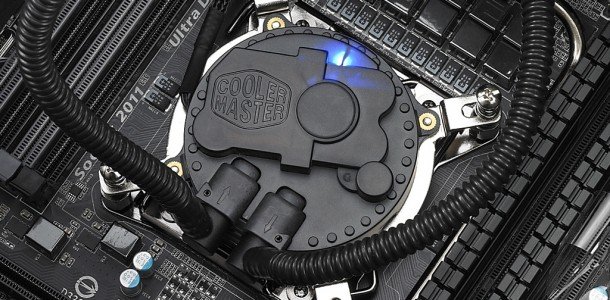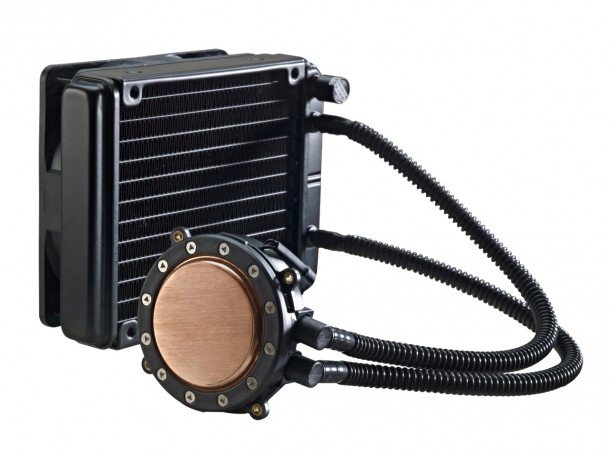Cooler Master Seidon 120M liquid CPU chiller releases this month

Cooler Master have decided it's now safe to get back into the water-cooling game and are releasing the new Seidon 120M onto the market this month. With a price tag of around £50 this closed-loop water cooler isn't sitting too high on the price spectrum, though I would expect Cooler Master to be releasing an £80-odd Seidon 240M with a double fan array and larger reservoir quite soon after.
The Seidon 120M is the now-classic style of liquid CPU chiller with a 120mm PWM fan attached to an equivalent-sized water reservoir, all linked up to a diminutive water block that sits atop your CPU. The fan can operate between 600 and 2,400RPM, so that PWM function ought to allow for the ability to balance performance and noise.
It should also be pretty versatile, with Cooler Master stating that it will come with an array of different fittings, ranging from Intel's top LGA 2011 socket (pictured) down to AMD's FM2 APU socket. That'll mean full compatibility then for the rest of the CPU line-ups, from Ivy Bridge to Piledriver.

Back in the before times, long, long ago, Cooler Master claims to have invented the closed-loop CPU water cooler. The Aquagate Series was brought out in 2004 and Cooler Master is calling it the first ever all-in-one liquid cooler. We obviously can't verify those claims because there are no records from that long ago, but our oldest sources tell us that its Aquagate closed-loop coolers were among the first that didn't demand a degree in engineering to put together and mount in/on your machine.
Let's hope the same is true of its latest offering; I've got my sample en route as I type, but we'll all be able to pick up a Seidon 120M when they're launched sometime this December.
The biggest gaming news, reviews and hardware deals
Keep up to date with the most important stories and the best deals, as picked by the PC Gamer team.

Dave has been gaming since the days of Zaxxon and Lady Bug on the Colecovision, and code books for the Commodore Vic 20 (Death Race 2000!). He built his first gaming PC at the tender age of 16, and finally finished bug-fixing the Cyrix-based system around a year later. When he dropped it out of the window. He first started writing for Official PlayStation Magazine and Xbox World many decades ago, then moved onto PC Format full-time, then PC Gamer, TechRadar, and T3 among others. Now he's back, writing about the nightmarish graphics card market, CPUs with more cores than sense, gaming laptops hotter than the sun, and SSDs more capacious than a Cybertruck.

